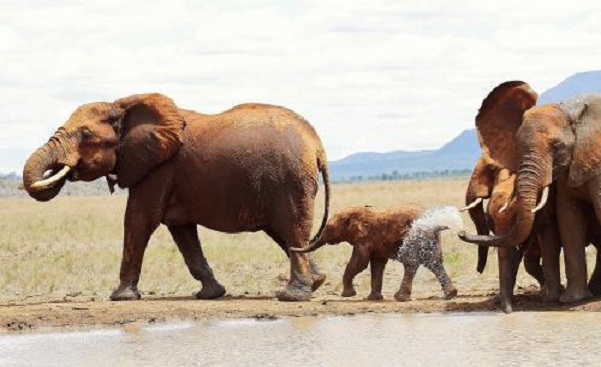In 2013, darkness befell Uganda’s wildlife when a respiratory virus swept through 56 chimpanzees at Kibale National Park in Uganda. The park has been a chimpanzee sanctuary and research center for 33 years gazzeted by the government of Uganda. Researchers have now come together to pave a way forward following the Corona virus pandemic outbreak.
According to the management at at Kibale and Gombe Stream National Park in Tanzania, human respiratory viruses take the lead in causing death in chimp communities. Researchers have now teamed up to protect apes as well as local people from COVID-19.
Last week, hundreds of researchers, conservationists, and veterinarians converged virtually to share strategies in back-to-back webinars held by the Ape Alliance and the African Primatological Society. They are already cordoning off preserves, working with locals to reduce contact with apes, and wearing masks in the forest.
The ape form of the receptor that the new coronavirus uses to enter cells (the angiotensin-converting enzyme 2, or ACE2, receptor) is identical to the human one, so it’s likely apes can be infected, according to an 11 April preprint on bioRxiv. If the virus gets into ape communities, flattening the curve will be all but impossible. “Gorillas can’t social distance,” says primatologist Tara Stoinski at the Dian Fossey Gorilla Fund.
Among chimps at Taï National Park in Côte d’Ivoire, researchers have detected repeated outbreaks of viruses and strep since 1999. Each time a respiratory virus swept through, about one-quarter of the chimps died, says primatologist Roman Wittig of the Max Planck Institute for Evolutionary Anthropology. Those deaths, plus poaching and habitat loss, have shrunk the Taï forest chimp population from 3000 in 1999 to 300–400 today, he says.
More so, among mountain gorillas, respiratory viruses cause up to 20% of sudden deaths. Half the world’s 1063 mountain gorillas live at Bwindi Impenetrable National Park in Uganda, where 40,000 tourists visit every year. Following a February report in Frontiers in Public Health, the study found out that more than 98% of the observed tourist groups got closer to the gorillas than the mandated 7 meters, and that sick tourists tried to hide their illnesses. All this could be a rocket launcher to the deadly transfer of human respiratory diseases to the apes.
Thankfully, African governments have halted all ape-related tourism to curb down possible transfer. At Bwindi, Kalema-Zikusoka trained 130 Ugandan Wildlife Authority rangers on how to keep coronavirus from gorillas and monitor the apes for illness. At Taï and Kibale, researchers who observe the apes quarantine for up to 14 days, wear masks, and keep their distance, among other actions. And researchers at Taï can send chimps’ feces to be tested for COVID-19 regularly.
If apes do sicken and become too weak to climb into their sleeping nests in trees, researchers may sleep nearby to protect them from leopards or poachers, Wittig says. But there are no plans to treat sick animals.
About Guide2Uganda
Guide2Uganda (www.guide2uganda.ug) is the most comprehensive source of information about Uganda that exists on the web, with more content on Uganda and surrounding towns, attractions, museums and galleries than any other online guide that currently exists for Uganda as well as being a dynamic news and comprehensive events driven site with content being added daily.
According to WeFollow & Peer Index (whom both measure online influence) we are among the most influential online media organizations in Uganda. We were also awarded for ‘’Best Destination Website in Uganda’’ by Jumia Travel Uganda in the 2017-2018 Africa Travel Awards. If you are planning a visit to Uganda you can always reach us on; info@guide2uganda.ug




